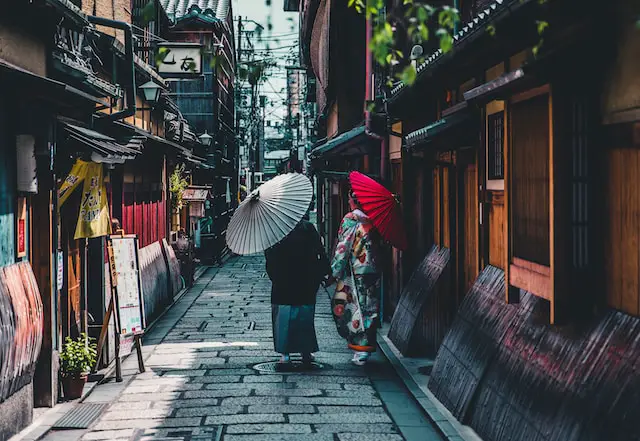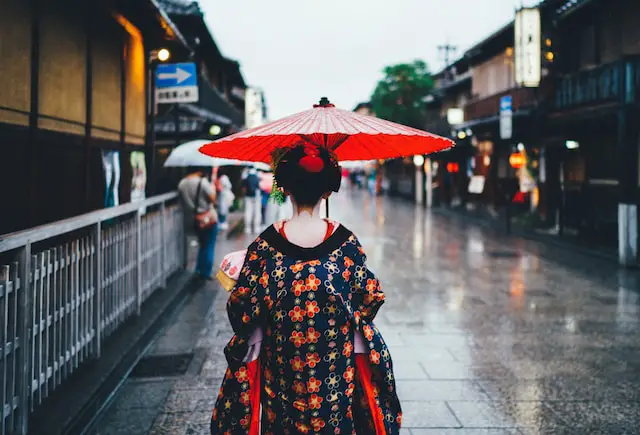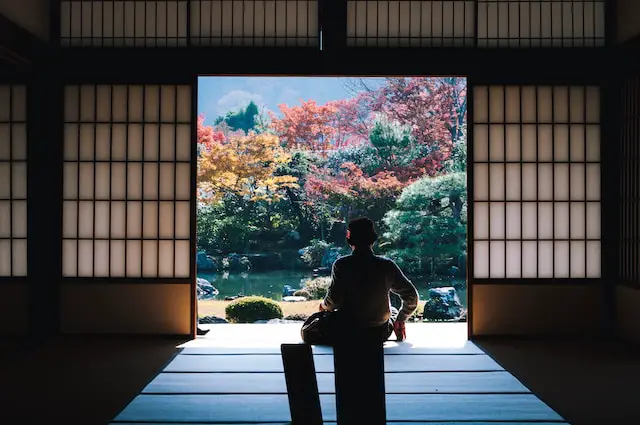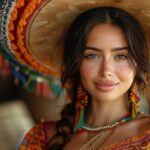Often referred to as the cultural capital of Japan, Kyoto is a city that seamlessly marries the old with the new. With its serene temples, picturesque gardens, traditional teahouses, and bustling city streets, Kyoto offers a captivating journey through the annals of Japanese history and culture. Whether you’re a history enthusiast, a nature lover, or a foodie, Kyoto promises an unforgettable experience.
A Brief Introduction
For over a thousand years, Kyoto was the imperial capital of Japan, which has deeply influenced its cultural and historical significance. Today, it stands as a testament to Japan’s rich past, showcasing over 2,000 religious places including 1,600 Buddhist temples and 400 Shinto shrines. Furthermore, 17 of its locations are UNESCO World Heritage sites.

Top Attractions
Kinkaku-ji (The Golden Pavilion): This Zen Buddhist temple, covered in shimmering gold leaf, reflects majestically on the pond below. Apart from its obvious beauty, it serves as a model of Muromachi period garden design.
Fushimi Inari Taisha: Recognized for its thousands of red torii gates, this Shinto shrine is dedicated to Inari, the god of rice. The hike up the mountain offers multiple shrines, scenic views, and a glimpse of Kyoto from above.
Kiyomizu-dera: A monument to the Heian period, this temple provides a panoramic view of the city. Visitors should make a point to visit the Jishu Shrine dedicated to the deity of love and matchmaking located on its grounds.
Arashiyama Bamboo Grove: A visit to Kyoto is incomplete without wandering through this mesmerizing bamboo forest. The soaring stalks of bamboo, when caught by the wind, produce a hauntingly beautiful sound.
Seasonal Highlights
Spring (March to May): Hanami or cherry blossom viewing is a must-do. Maruyama Park and the Philosopher’s Path are popular spots for cherry blossoms.
Autumn (September to November): The fall foliage in Kyoto is a spectacle. Eikando and Tofuku-ji are renowned for their autumnal displays.
Winter (December to February): With fewer tourists, Kyoto becomes a serene winter wonderland, especially when temples like Kinkaku-ji get a light dusting of snow.
Gastronomic Delights
Kyoto is a paradise for food lovers. From the traditional multicourse meal, kaiseki, to simpler delights like matcha-flavored sweets and ramen, there’s something for every palate.
Nishiki Market: Known as “Kyoto’s Kitchen”, this market is ideal for sampling local specialties.

Pontocho: An atmospheric alleyway bursting with eateries, ranging from budget yakitori stalls to upscale kaiseki restaurants.
Matcha Treats: Visit Gion Tsujiri or Ippodo Tea House to experience authentic matcha tea and desserts.
Cultural Experiences
Tea Ceremony: Participate in a traditional tea ceremony, a choreographic ritual of preparing and serving matcha.
Maiko or Geisha Encounter: Gion district is the best place to catch a glimpse of these traditional performers. For a deeper experience, there are places where you can book a private dinner with a Maiko.
Stay at a Ryokan: Experience traditional Japanese hospitality by spending a night at a ryokan, a traditional Japanese inn.
Travel Tips
Kyoto City Bus and Subway: A one-day pass can be economical if you’re planning to visit several sites in one day.
Rent a Bicycle: Kyoto is a bike-friendly city. Explore the city at your own pace, especially along the Kamogawa River.
Etiquette: When visiting temples and shrines, follow the local customs – cleanse yourself at the purification fountain, throw a coin as an offering, and bow respectfully.
Kyoto isn’t just a city; it’s an experience that transports you back in time. Its streets echo stories of samurai showdowns, poetic love tales, and historic ceremonies. Yet, the modern hustle-bustle showcases Japan’s progress. From the stillness of Zen gardens to the energetic vibes of downtown, Kyoto beckons with open arms, waiting to share its treasures with those who seek them. So, pack your bags and set forth on a journey to explore Japan’s historic heart – Kyoto awaits!
While the major attractions of Kyoto are certainly not to be missed, the city also holds a plethora of lesser-known gems that promise an equally enriching experience.
Daigo-ji Temple: Located in the southeast of Kyoto, Daigo-ji is a sprawling temple complex renowned for its five-story pagoda. Visit during spring for a breathtaking hanami experience.
Kurama and Kibune: A scenic train journey away from central Kyoto, these twin villages offer a refreshing escape. Kurama-dera Temple and the hot spring baths are prime attractions, while Kibune boasts picturesque ryokans and the famous Kibune Shrine.
Toei Kyoto Studio Park: A treat for film buffs, this theme park and film set offers a peek into the Edo period streets, ninja shows, and even samurai sword-fighting classes.
Shopping in Kyoto
For those inclined to shop, Kyoto offers unique souvenirs and gifts:
Kiyomizu-yaki and Kyo-yaki: These traditional ceramics range from tea ceremony utensils to decorative items.
Nishijin Textiles: Renowned for its traditional weaving techniques, Nishijin offers exquisite kimonos and fabrics.
Kyogashi: Traditional Kyoto confections, these sweets often have artistic designs inspired by nature.
Kyoto at Night
While Kyoto may seem serene and traditional, it comes alive in a different way after sunset:
Gion by Night: The traditional wooden machiya houses are illuminated, and you might spot a geisha or maiko shuffling to their evening appointments.
Kiyamachi Street: Brimming with bars, restaurants, and clubs, it’s a popular nightlife spot for locals and tourists alike.

Festivals to Witness
Kyoto’s cultural legacy is magnificently displayed in its festivals:
Gion Matsuri: Held in July, it’s one of Japan’s grandest festivals, featuring huge float processions and traditional music.
Aoi Matsuri: In May, witness a large procession dressed in the style of the Heian court.
To-ji Flea Market: On the 21st of each month, the grounds of To-ji Temple transform into a bustling market where antiques, crafts, food, and plants are sold.
Practical Information
Language: While Japanese is the primary language, many signs are in English, especially in tourist areas. It’s helpful to know basic Japanese phrases, but people are generally understanding and will do their best to assist you.
Currency: Japanese Yen (¥) is used. While credit cards are accepted in many places, cash is preferable, especially in smaller establishments.
Safety: Kyoto is one of the safest cities in the world. However, always exercise general caution, especially in crowded places.
Kyoto is more than just a destination; it’s a tapestry of stories, traditions, and evolutions. Each visit reveals a new layer, a hidden alley, a previously unnoticed detail on a temple wall, or a seasonal delicacy not tasted before. It’s a city that requires immersion, not just sightseeing. Whether it’s your first visit or your tenth, Kyoto never ceases to enchant, surprise, and invite deeper exploration. Dive in, and let the city’s soul intertwine with yours, creating memories that will be cherished for a lifetime.







